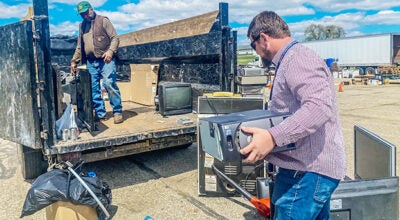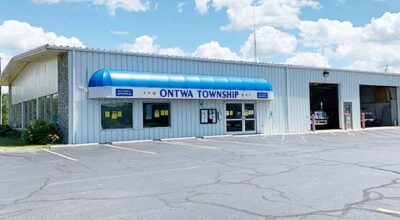A lesson in survival
Published 6:52 pm Sunday, January 9, 2011

Area firefighters assemble an A-frame-style ladder in a confined space simulation involving an underground tank Friday at the City of Niles Fire Department. In this scenario, firefighters would have to drag the injured victim to safety through a tunnel.
It doesn’t happen very often, but when it does, it’s one of the worst scenarios firefighters can face.
“In my career I may see two to five confined space cases,” said Niles Fire Department Capt. Don Wise, who has about 20 years of experience. He said confined space cases — vessels, tanks and above-ground and underground containers — have limited access; potential for hazardous atmosphere; and are not designed for continuous occupancy.
Firefighters from the City of Niles; Notre Dame; Clay Township, Ind.; Mishawaka; Penn Township, Ind.; Southwest Central Fire Territory, which includes Centre, Greene, Portage and Warren townships; and a spill cleanup general contractor took part in a five-day, 40-hour confined spaces training last week. One day involved training at the Notre Dame power plant.
Using a $36,000 grant from Cargill and the Indiana Farm Bureau, the area fire departments were able to purchase equipment and conduct training for the MABAS (Mutual Aid Box Alarm System) Division 201 Tactical Rescue Team.
The 105 members of this seven-department team respond to specialized calls that involve rope rescues, trenches, building collapses and confined spaces.
Wise explained that the grant was given to help reduce the number of farm-related fatalities. Firefighters conducted scenarios like grain bin and wastewater treatment tank emergencies, what Wise called “the nasties.”
“When everything hits the fan, we get called,” he said.
The major concern with confined space calls is usually “bad air,” Wise explained.
In one simulation conducted Friday afternoon, firefighters assembled an A-frame-style ladder over a hole by tying together two fire truck ladders. A firefighter would be lowered into the hole to rescue a “victim,” who would be dragged through a tunnel to safety.
“We’re dealing with noise. We’re dealing with vibrations,” Wise said as he turned on a fan during one confined space scenario. “We start out with simple entries, like a well pit. We finish off the class where we don’t know where the victim is.”
Wise said that during the training, firefighters who struggle with claustrophobia are identified, and those who do not have issues with confined spaces are sent into the “tunnels” in simulations — one including a 15-inch-wide, 12-foot tube.
“It’s not for everybody,” Wise said.
Wise said that receiving this grant is vital because confined space calls are uncommon, but the equipment and training needed is important.
“Just the communications equipment … our radios don’t work underground,” he explained, so “hardline” communications must be on hand, an investment of about $15,000 alone.






